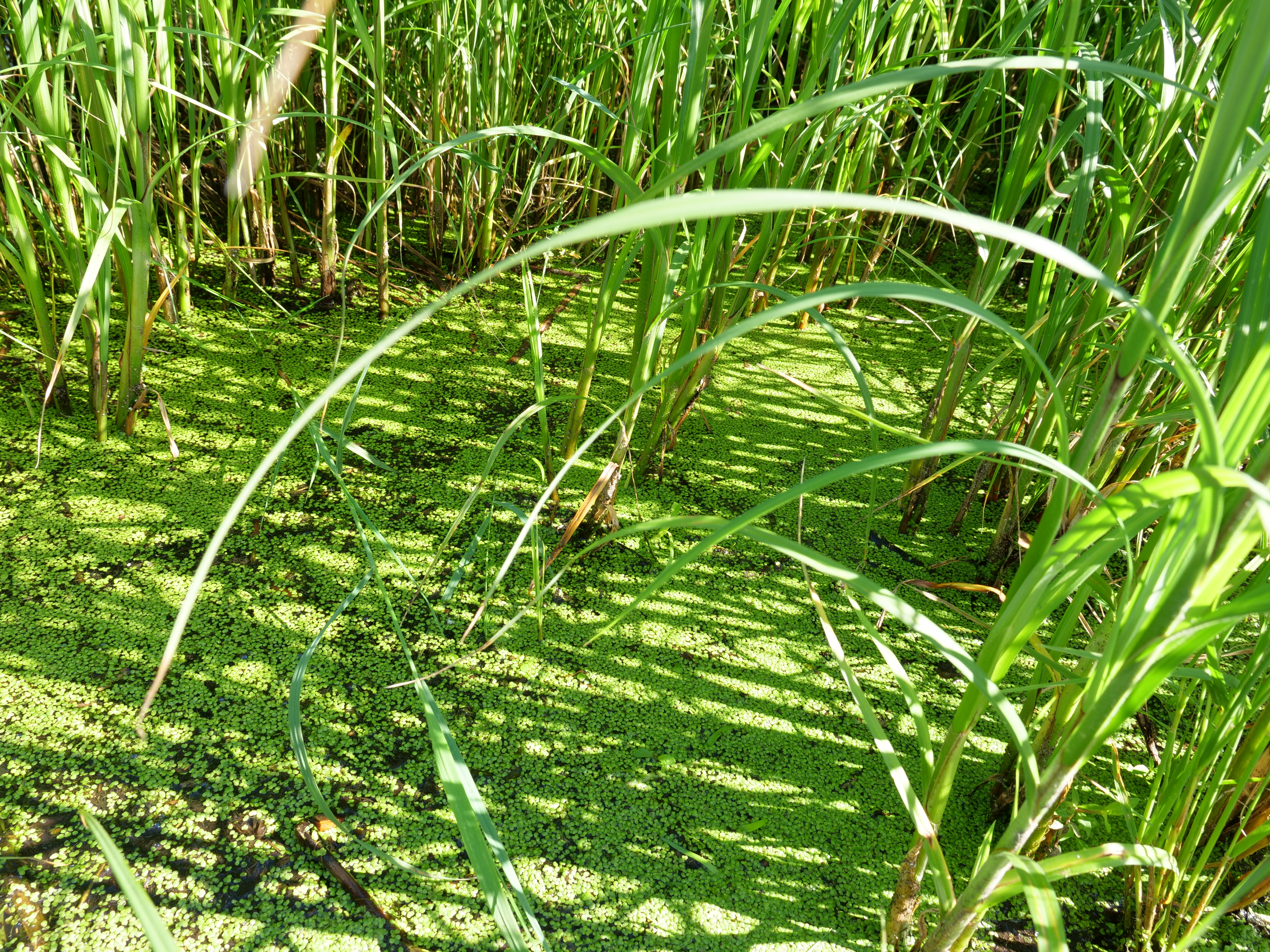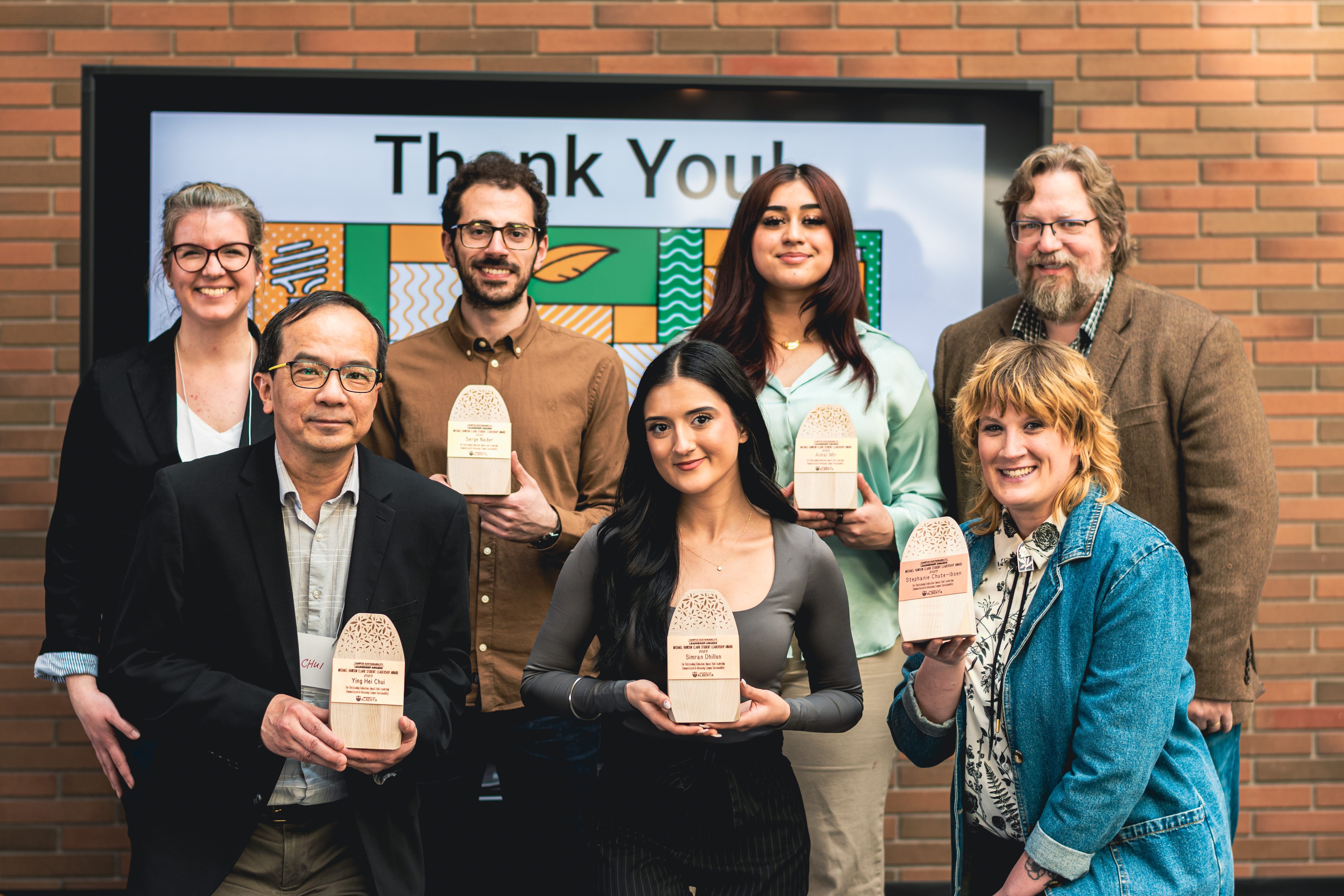How historical tree markings can help Indigenous nations win land rights
All human societies leave fingerprints on the land. These can be as large and enduring as a city full of high rises, or as temporary as a forgotten path through the woods.
Indigenous societies used—and continue to use—the land to sustain themselves, and the marks left by Indigenous people living centuries ago can still be seen today. This is made abundantly clear by culturally modified trees (CMT), trees whose bark has been methodically stripped, usually for making products such as clothing, baskets, shelter, bedding, and other goods and ceremonial items. Left on long-lived trees such as western red cedars, these imprints can last for centuries.
Maïlys Paccoud, a third-year anthropology major, native studies minor and winner of this year’s Festival of Undergraduate Research and Creative Activities (FURCA) award, put CMTs at the heart of her award-winning project. She analyzed whether these trees could be useful in proving Aboriginal title, a legal term that refers to the inherent right of Indigenous groups to the undisturbed use of land inhabited by their ancestors. She then explored how pursuing Aboriginal title in a Canadian court setting aligns with Indigenous nations’ goals for self-determination.

FURCA winner and anthropology student Maïlys Paccoud
What inspired you to make CMTs the focus of your research?
The idea for this project started when I was at an archaeological field school last summer. It was on the west side of Vancouver Island, on Tseshaht territory. While there, I saw a culturally modified tree for the first time. It was a western red cedar that stood above all the other trees, and its scar, the modified part, also went above the other trees.
Our guide mentioned that the trees are a great example of extensive land management and forest management by Indigenous people. I’d taken a class a few months earlier about using plant evidence to dismantle foundational ideas that base some of our laws in Canada. For example, in the southeast U.S., many plants were managed by Indigneous people through continuous harvesting and usage. This made it clear that the legal system built by Americans at the time was founded on untruthful assumptions about Indigenous peoples’ land usage. A lot of people assume Indigenous people didn’t touch the land in a significant way, but using culturally modified trees, you can see that’s not the case. Taking that class and seeing that culturally modified tree, it all sparked that idea for my thesis.

A Culturally Modified Tree in Goat Rocks Wilderness, a part of Gifford Pinchot National Forest, Washington, USA
How can these trees be used to prove Aboriginal title?
To establish Aboriginal title, an Indigenous nation must prove three things: exclusivity, sufficiency and continuity of occupation. With sufficiency, an Indigenous nation has to show that, rather than using the land passively, they were returning to this place, or using it sufficiently to prove a strong physical connection. Continuity means that Indigenous groups had that connection with the land before colonialism in Canada, or pre-contact with Europeans. And with exclusivity, Indigenous groups must show that they historically had the intention and capacity to retain exclusive control over the land, and exhibited the right to exclude other Indigenous groups from using it.
Sufficiency and continuity are really obvious through CMTs. Because trees have tree rings, you can literally count the years back and see the continuity embedded in that tree. You can also see sufficiency because there are thousands of CMTs within one area, some with dozens of harvesting events present on the same tree. But with exclusivity, the tree won’t really tell you who was using it in the past. Exclusivity relies on oral histories and historical accounts of how that land was managed. Previous court cases have accepted oral historical evidence, so this can be an avenue for proving the exclusive use of a territory by an Indigenous nation.
Your project also incorporated the idea of “sustainable self-determination.” What is sustainable self-determination?
Self-determination, loosely-defined, refers to the right of a group of people to govern themselves. Sustainable self-determination is a framework termed by Jeff Corntassel, a professor of Indigenous studies at the University of Victoria. One of its tenets [calls for Indigenous groups] to step away from recognition-based self-determination. Seeking out Aboriginal title is inherently a form of recognition-based self determination, because you rely on the recognition of the state to legitimize your right to the land.
He suggests turning towards the community, and working on self-determination at the community level instead of engaging with the state in legal battles that can put First Nations into debt, drain them of resources and are often fruitless. His alternatives include reinvigorating trade between Indigenous communities, strengthening local and regional economies, and perpetuating Indigenous livelihoods via the regeneration of family and Indigenous roles and responsibilities to their homelands.
How does sustainable self-determination factor into this research on Aboriginal title and CMTs?
When I began this research, I intended to explore how valuable CMTs could be in proving Aboriginal title in a court setting. But as I completed that analysis, and the more I read about Aboriginal law in Canada, I realized that this avenue might not go far enough in terms of asserting Indigenous sovereignty. So I shifted my lens to one of sustainable self-determination, which provided much more Indigenous control over their autonomy and resources, which is the aim of this research in the first place. In the end, I realized a combination of pursuing Aboriginal title using this invaluable CMT evidence and practicing sustainable self-determination, perhaps through activities such as cedar bark harvesting, could be useful to Indigenous communities in asserting their sovereignty.
Why was this project important to you?
It’s important to me because I’m really interested in making anthropology work for Indigenous communities and not the other way around. Historically, anthropology has been a very colonial discipline and has really abused and exploited Indigenous nations—so I think it’s important to produce work that aims to do the opposite.
What valuable lessons did you get out of participating in FURCA?
I learned that research changes along the way. I also found that it’s important to keep an interdisciplinary approach in research as many different perspectives are valuable to producing honest work. Also keeping an open mind as one goes along, even if the conclusions aren’t what you thought they might be.


